Dynamic Milestone
Celebrating the centennial anniversary of biodynamics
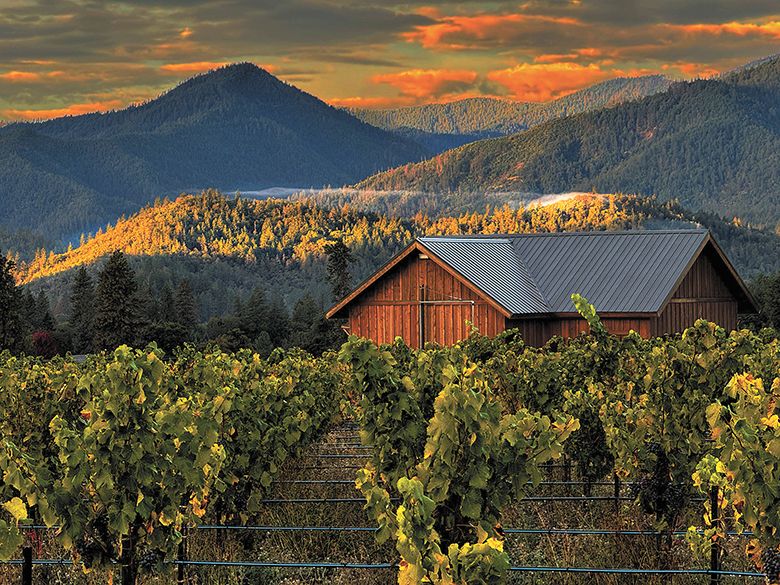
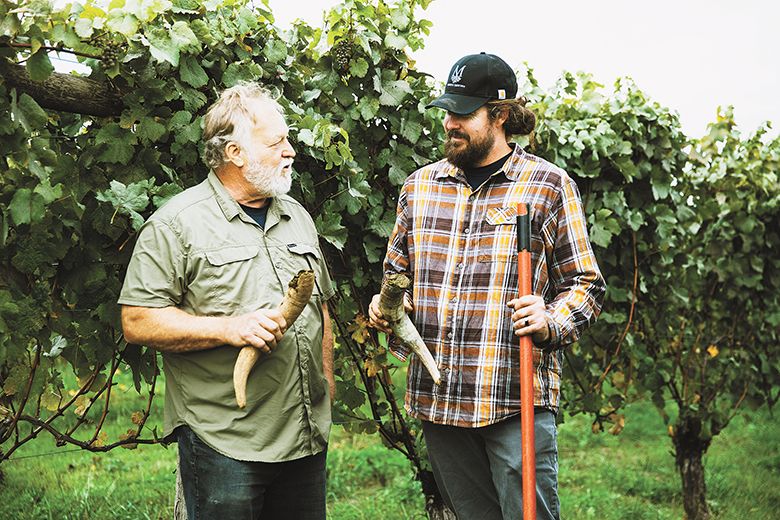
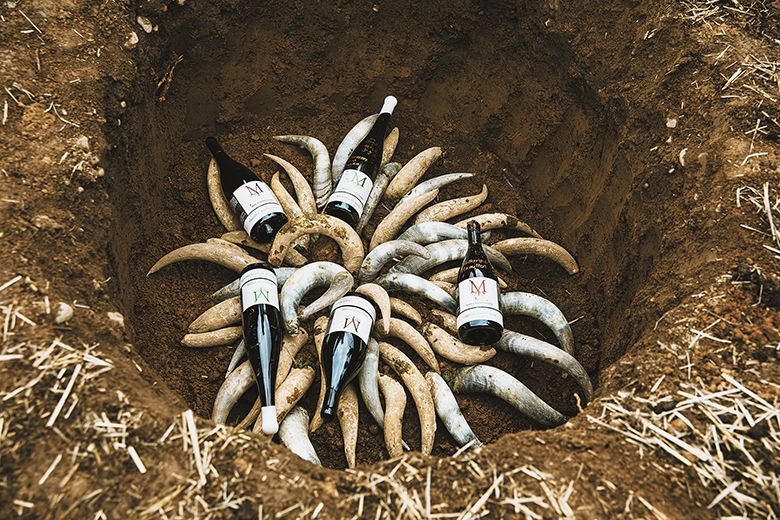
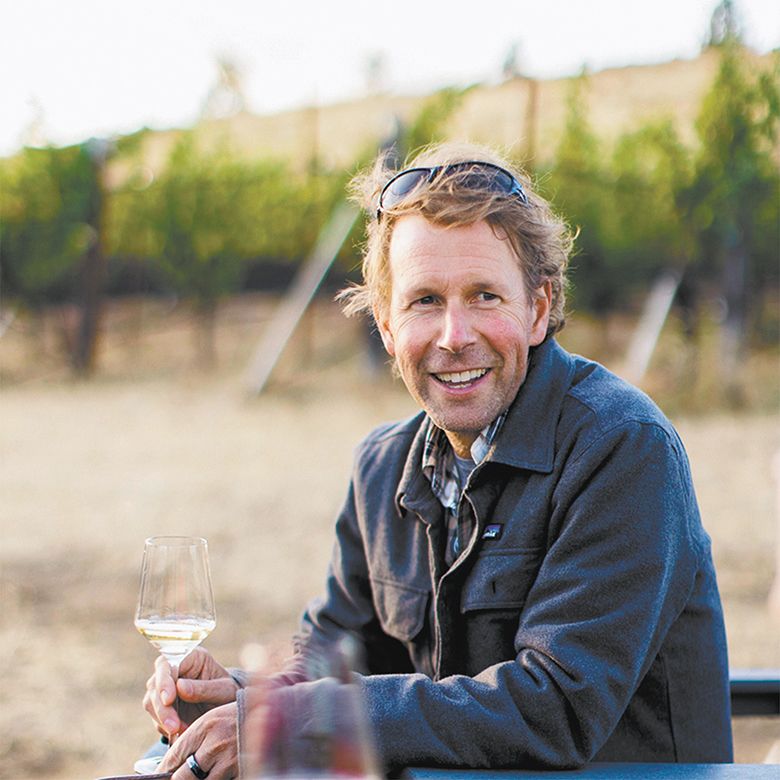
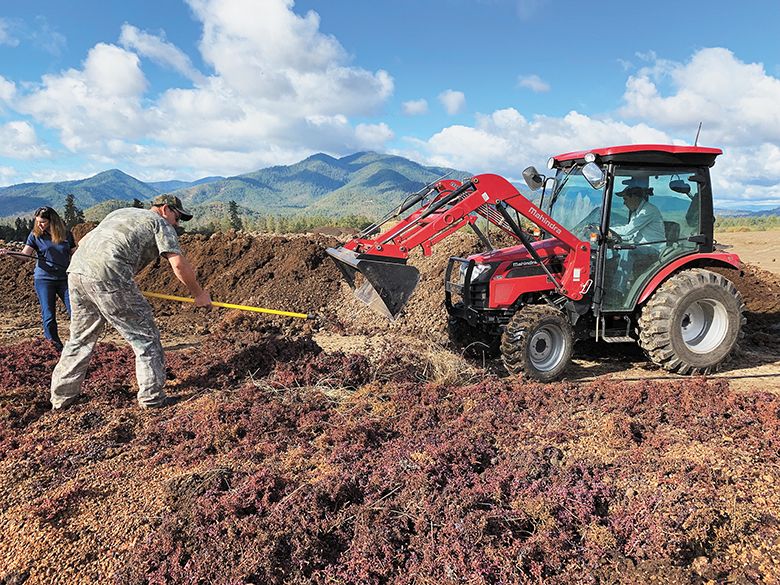
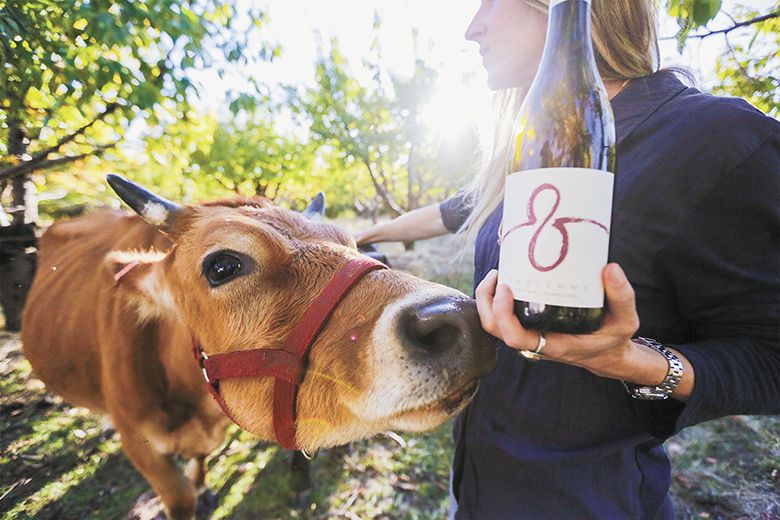
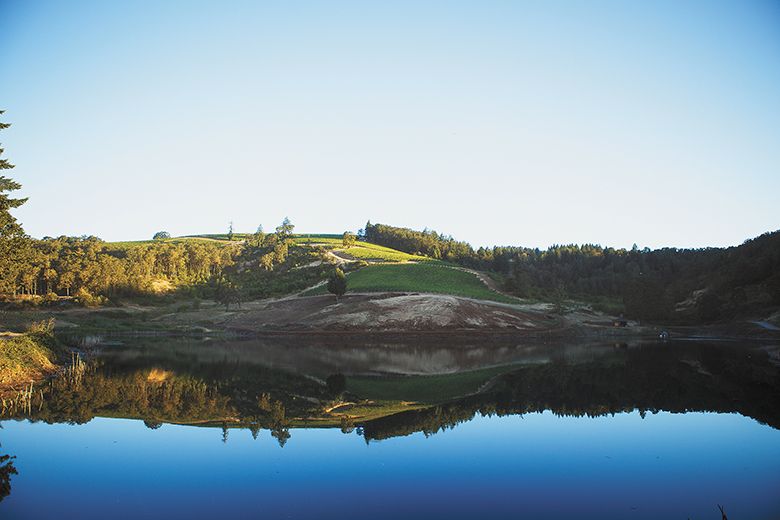
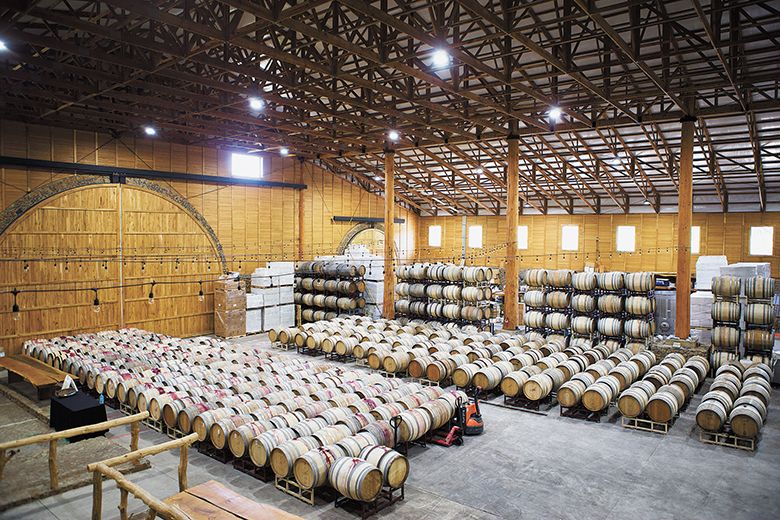
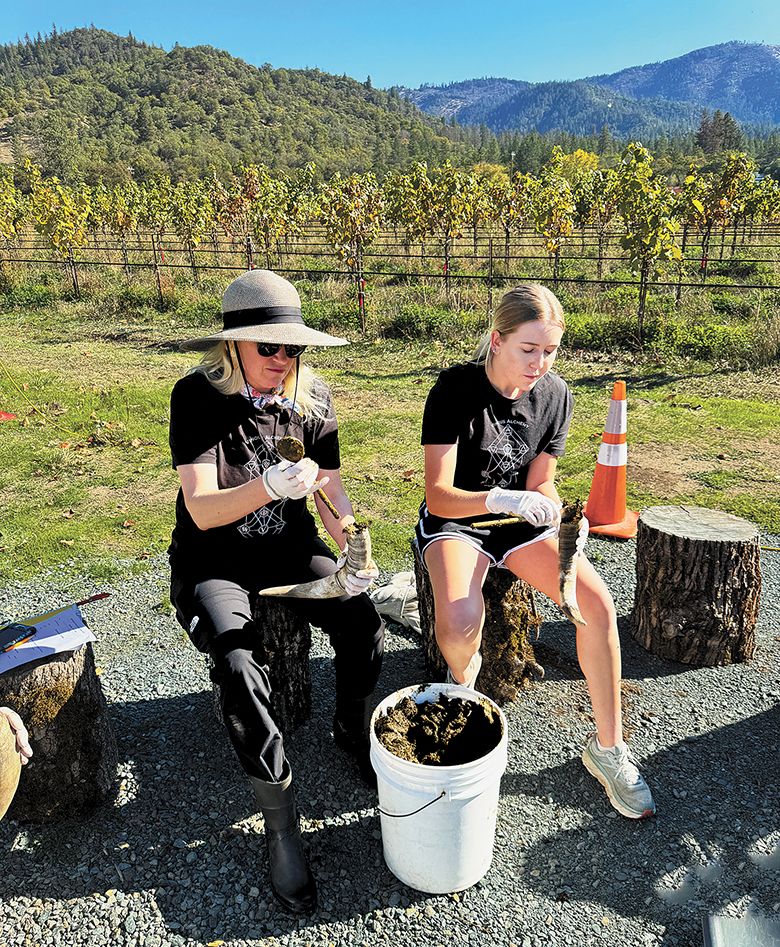
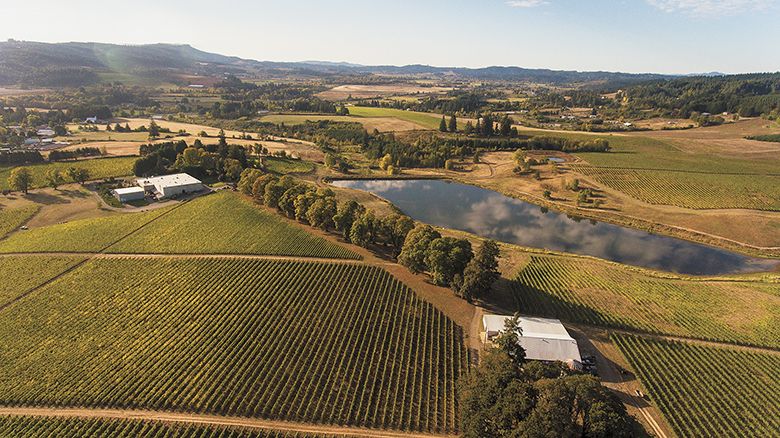
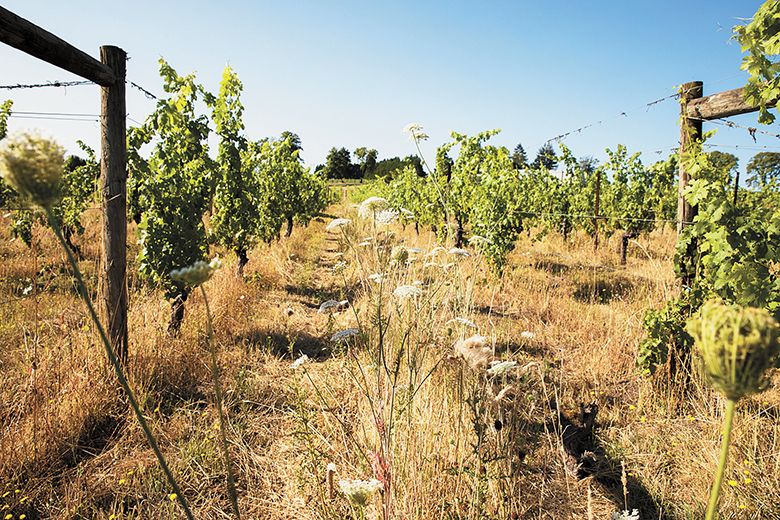
By Annelise Kelly
This year, biodynamic farming celebrates its 100th anniversary. Its philosophy of growing and processing food adopts a holistic approach, prioritizing diversified ecosystems, soil health and regeneration. It’s experienced increasing popularity and profile in recent years, especially within the Oregon wine industry.
While biodynamic might possess contemporary cachet, its roots reach back to traditional European farming techniques that long pre-date founder Rudolph Steiner’s initial concept a century ago. Today, over two dozen wineries in Oregon, and more than 1400 worldwide, are Demeter-certified biodynamic. According to the Demeter Federation website, there are 2002 acres of Demeter certified vineyards in Oregon and just over 65,000 acres worldwide.
While many wine enthusiast now have biodynamic on their oenophilic radar, what exactly is biodynamic wine? Why are Oregon winemakers increasingly choosing to farm and produce this way?
To learn more, we talked with several local practitioners. Our sources include: Rudy Marchesi, Montinore Estate partner and former chairman of the board and president of Demeter U.S., an independent certification organization; Craig Camp, general manager of Troon Vineyard and member of the board of directors of the Biodynamic Demeter Alliance; Moe Momtazi, owner and founder of Maysara Winery and Momtazi Vineyard; and Steven Thompson, owner and vigneron of Analemma Wines.
HISTORIC AND CULTURAL CONTEXT
In June 1924, Rudolf Steiner delivered a series of eight presentations to 111 farmers in Koberwitz, Germany (now Kobierzyce, Poland). In these speeches, he explained the theory of biodynamic farming he had developed in accordance with a constellation of influences. “His lectures were based on his belief in anthroposophy, the spiritual science, and also the natural homeopathic folk traditions that he had been exposed to,” says Camp.
Today, Steiner is known primarily for “inventing” biodynamic farming, as well as designing the principles on which Waldorf Schools are based. Variously described as a philosopher, architect, artist, academic, and the founder of anthroposophy, he presented his biodynamic lectures within a year of his death at age 64.
As Camp points out, the 1924 cultural context is vital. “When Steiner was giving these lectures, culture and society were in total disruption. It was after World War I, and there was a lot of disillusionment. Obviously, the economy was a disaster, and people were looking for deeper answers, so movements like anthroposophy really exploded.”
This disruptive discontent coincided with an escalation of agricultural chemical use, largely due to World War I weapons technology.
Explosives were manufactured by capturing nitrogen and converting it to ammonia “so when the war ended, that technology and industrial power remained. Of course, they started making nitrogen fertilizers with ammonia,” observes Camp. “This group of farmers (Steiner’s 1924 audience) realized their lives were changing… food quality and flavors were deteriorating.”
By 1928, the Demeter organization had established biodynamic standards along with an associated trademark. By 1931, about one thousand farms were practicing biodynamic agriculture.
Fast forward to today: biodynamic is one of several agricultural practices dedicated to holistic, sustainable farming and production. “And, in my opinion,” says Camp, “Steiner’s philosophies really changed our way of thinking about agriculture and became the basis of organics.”
WHAT IS BIODYNAMIC FARMING?
Biodynamic farming maintains everything is biologically-connected; rather than trying to improve upon nature, farmers should work with it. The entire farm is considered an organism, an integrated living system, that flourishes when self-sufficient. Biodynamic regulations are extensive, addressing soil fertility, animal welfare, biological diversity, wild land preserves, crop rotation, predator habitat and more.
Lunar cycles and the use of “preparations” are particularly emphasized. Preparations concocted on the farm from herbs, minerals and animal manures “are utilized in field sprays and compost inoculants applied in minute doses, much like homeopathic remedies are for humans,” according to the Demeter-USA website. Biodynamic practice has guidelines regarding certain elements, such as wild areas required within the farm, chemicals, plastics and more.
Thompson notes, “The use of herbal sprays, the requirement to have wild lands and natural preserves, and the influence of beneficial plantings– all increase the diversity of the farm. And that enhances the resiliency against pests and other disease pressures.”
In addition, “by creating and spraying these teas, we’re enhancing the biome of the property. Like microbiomes in our gut, it’s the same with a farm and an ecosystem– those biomes are unique to a specific place.” Thompson says these preparations “attract beneficial insects carrying pollen that in turn creates yeast populations. This ends up producing the taste through the fermentations in the cellar. That’s how we’re able to get a taste of place. The soil is alive, the plants are flowering, there’s lots of insects in the air. The animals move through, eating, digesting and dispersing these microbial populations throughout the whole property. It strengthens the entire ecosystem of the farm.”
“Biodynamic practices enhance and enliven the biology of your farm,” observes Marchesi. “We’re talking about underground, above-ground, and the vines you’re growing. The life cycle of all of this biology in the soil produces compounds that become part of the nutrient pool for your vines. The more you support and enhance that activity within the soil, in the microbiome,” the more your wine expresses the place, “which is really the goal of all great winemakers– for their wine to express where it comes from. I believe using biodynamic practices on your vineyard is a powerful and practical tool in the pursuit of producing high-quality wine that express a sense of place.”
Momtazi notes that, according to biodynamic beliefs, “the whole universe is considered to be alive, living and there’s a strong connection between what impacts both the microcosm and macrocosm. Another factor that sold me on biodynamics is farms are considered sick if they import anything from outside– fertilizers and things like that. So, for biodynamic farming, you create a complete ecosystem and everything comes from within. Having both domesticated and wild animals is really important. We have coyotes and at least 300 wild turkeys on our land. Since building the reservoirs and filling them with fish, we now have bald eagles, ospreys and falcons, which really protect us during harvest time. Right now, we keep 46 cows for their manure, so we can make our own compost and a lot of teas. During certain times, we spray these teas on the foliage or inject it through the vineyard irrigation line.”
Momtazi describes experimenting one year by making two identical piles of compost and applying biodynamic preparations only to one. “The pile we had inoculated with the preps just turned out to be so nice. There were so many worms! The health of that compost pile was noticeably better.”
BIODYNAMIC PRODUCTION STANDARDS: WHAT’S ALLOWED, WHAT’S NOT
As biodynamic agriculture evolved, it became clear that the way food is processed matters. Because poor processing can interfere with or negate the benefits of biodynamic growing, the biodynamic production standard was established in 1994. It addresses wine specifically, along with other products, including beer, dairy, meats, textiles, confections, baked goods and even infant formula.
In the biodynamic wine world, there are two distinct certifications, one for grape growing and another for wine production. In Oregon, many winegrowers pursue both certifications.
“If you farm biodynamically, but then use commercial production methods in the winery, you’re negating everything you attempted to achieve through biodynamic farming– that expression of place,” says Camp. “Biodynamic is an agricultural discipline, so it’s about farming. Biodynamic winemaking is about not screwing that up. Basically, you’re not adding yeast, malolactic bacteria nor using enzymes. You’re not adding things that take away from the expression of the grapes you grew. The point of biodynamic winemaking is simplicity.”
“In biodynamic winemaking, you manipulate the wine as little as possible,” says Momtazi. “You work closely with Mother Nature and whatever she provides. It takes a little bit longer for wine to evolve when you don’t add or remove certain things. However, we find our wines age much, much longer and taste better. And, more than anything else, it’s considerably healthier for consumption.”
“There are some basic principles, for example: not introducing synthetic nutrients for our yeasts. That would be comparable to adding synthetic fertilizers to our plants, so those are not allowed,” notes Marchesi. “Very harsh sanitation materials are forbidden because they shouldn’t be anywhere near our finished product. We avoid using vessels and transfer mechanisms containing plastic, along with very aggressive pumps, because they beat up the wine. For example, instead of stripping the grape juice of all living organisms with heavy doses of sulfur prior to fermentation, we encourage all the strains of yeast living in our environment and the bacteria that bring the wine through malolactic fermentation. While we may have multiple strains working at the same time, those individual organisms have byproducts through their life cycles that contribute something to the character of the wine. By doing so, you’re really allowing the expression of place with all the organisms coming in from the field by encouraging them to grow.”
“Of course, that doesn’t mean you can just make grape juice and let it rip. You have to monitor it… things can go wrong,” continues Marchesi. “For example, acetobacter will turn alcohol into vinegar and other bacteria can produce ‘off’ flavors. We certainly don’t want either. But in red wines– and some whites– we do want the bacterial function that transforms malic acid to lactic acid during malolactic fermentation. Ideally, we monitor, rather than try to control. We sort of corral and guide the organisms through the process to get to the endpoint. In the end, we have more interesting, enlivened, expressive wines by allowing the nature of our vineyard to be active in the fermentation and aging process. That’s where the standards came from. I think they’re still– and should continue to be– a work in progress,” says Marchesi.
DOES IT IMPROVE WINE? HOW AND WHY?
Biodynamic methods are uniquely suited to wine because terroir is so valued. As our experts discussed, the thriving, vibrant health of the vineyard and fruit expresses itself brilliantly in the wine.
“When I first heard about biodynamics, I was extremely skeptical, to say the least,” admits Camp. However, “the wines I most enjoyed, those that inspired me, were, again and again, biodynamic. That opens your mind if you’re paying attention.”
Biodynamic farming “strengthens the relationship between the vine and soil,” points out Thompson. “Nothing prevents a transparent expression of the soil and vine itself. Biodynamics enhance this relationship through increased microbial activity in the soil. It strengthens the natural rhythms of the vine in terms of sap flow and also physiological development– when it flowers and how it grows. It also maximizes the photosynthesis, creates more sugars, feeds those microbial communities, which then facilitate the transfer of nutrients and biologicals into the vine, providing a sense of taste of place.”
“Years ago, skeptics thought this was all hocus pocus… but after tasting our food or wine, a lot have begun farming holistically and biodynamically,” says Momtazi.
SCIENCE AND SPIRIT
“Biodynamics is not one thing,” explains Camp. “It’s many things to many people. There is a spiritual aspect to biodynamics. However, I think the spirituality is something you find by practicing this type of agriculture. Eventually, because you farm this way, you develop a spiritual connection to your land. Each farmer’s spiritual connection is unique to them as people and to the distinctive characteristics of their farm.
“There are people looking to push biodynamics forward, to incorporate it with modern science, which I think parallels many parts of biodynamics. We know about mycorrhizal fungi and feeding the soil and microbiology, key aspects of the biodynamic preparations. We’re doing these fermentations, then inoculating our soils and compost with microbiology, all very much in alignment with modern science. The difference, of course, is that contemporary scientific agriculture doesn’t like biodynamic products. They can’t patent it, put a brand name on it and then sell it.”
“I often use this analogy: Say I’m a sailor and take my boat down the Columbia River and out to the ocean, I make sure to go out and come back in with the tide,” says Marchesi. “I don’t want to be working against it. Here we are on Planet Earth, in the midst of all these other planets and our sun that influences us. They have energetic effects I certainly don’t understand, but some people do. Our tides are impacted– and, I’m just guessing– the water flow within plants as well as the growth and development of the plants themselves. We consult the calendar to avoid picking fruit on disadvantaged dates, when the energy isn’t right.”
Marchesi mentions a noteworthy anecdote demonstrating the degree to which planets influence agriculture. In August 2018, he planted a few rows of seeds for winter vegetables in his home garden. Two weekends later, when Oregon experienced a total solar eclipse, he planted more rows. “A friend of mine, who’s a biodynamic consultant said, no, you shouldn’t do anything all weekend. The total eclipse of the sun is a very impactful event.” The day before the eclipse, “I planted the same exact seeds 18 inches away from the ones I’d planted two weeks before. Same amount of irrigation, matching soil, everything identical. The seeds I planted earlier came close to 100 percent germination and looked great. Only 15 percent of the rows I planted within 24 hours of the eclipse germinated. Almost nothing sprouted. It was remarkable to witness the impact that incident had on seeds germinating in the ground.”
He also cites an experiment performed by a colleague. She planted one radish seed daily for 45 days, leaving them under a controlled artificial light. At the 30-day mark for each plant, she’d pull and measure it. “She had the measurements of 45 plants planted sequentially and plotted out. Amazingly, it was a perfect bell curve. The highest point of the bell curve coincided with the full moon; the lowest point coincided with the new moon. It beautifully illustrated how the moon’s position and phases impact plant growth.”
Thompson advises anyone making wine to do so biodynamically. “Because the nutrient and product quality are enhanced, it boosts the health of individuals consuming them. It’s also a developmental tool, meaning that when we approach the farming as a living ecosystem, we’re a part of the land and need to respect it. We must treat it in a generative way and see its beauty and abundance. If people approach life that way– realizing the surrounding richness and splendor, they would, I think, naturally be more benevolent, generous, kind, caring, patient– creating a more beautiful world.”
Upcoming Biodynamic Centennial Anniversary celebrations
June 8
Demeter®-certified wine tasting event
Stillwater event space, McMinnville
troonvineyard.com/biodynamic-centennial-tasting
theground.love/events/venue/stillwater
Participating Wineries:
Cowhorn Vineyard & Garden
Troon Vineyard
King Estate Winery
Johan Vineyards
Brooks Winery
Maysara Winery & Momtazi Vineyard
Domaine Willamette
Winderlea Vineyard & Winery
Soter Vineyards
Brick House Vineyards
Cooper Mountain Vineyards
Montinore Estate
Analemma Wines
July 20
Montinore Estate Roaring 20s party
The Grove, 216 N.E. Third St., McMinnville
montinore.com
Demeter-certified Biodynamic® directory
Southern Oregon:
Upper Five Vineyard
Cowhorn Vineyard & Garden
Troon Vineyard
Willamette Valley:
King Estate Winery
Johan Vineyards
Brooks Wine
Antica Terra
Meredith Mitchell Vineyard (grape grower only)
Maysara Winery & Momtazi Vineyard
Domaine Willamette
Winderlea Vineyard & Winery
Soter Vineyards
A to Z Wineworks
Brick House Vineyards
Cooper Mountain Vineyards
Montinore Estate
Landlines Estates
grace+vine (online sales only)
Columbia Gorge:
Analemma Wines
Mt. Hood Organic Farms (cider)
Estlebrook Farms and Vineyard (WA)
Are you a winegrower or winery interested in biodynamics?
Analemma is launching a Exploratory Grower technical session, a trade-only, in-depth exploration of biodynamic growing methods. Led by co-founders Steven Thompson and Kris Fade especially for viticultural professionals, it is complimentary and designed to share information and experience with growers interested in transitioning their farming practices. For more details, email cellardoor@analemmawines.com.
After living in Denmark, the Netherlands, L.A. and the Bay Area, writer Annelise Kelly settled in Portland, where she delights in food carts, Douglas firs, dancing and getting crafty. Thanks to Annelise’s broad interests, her career path has weaved through cooking, events, technical writing, decorative painting and retail display.Wanderlust takes her across borders and oceans every chance she gets. Connect with Annelise at www.annelisekelly.com.








